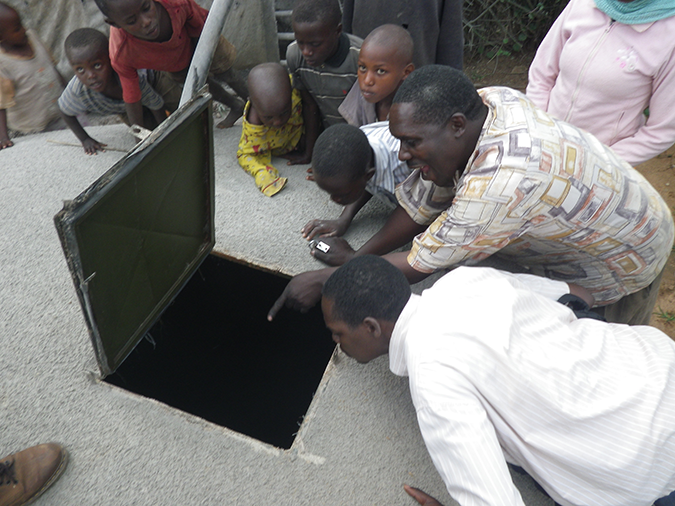Access to water is a huge challenge for refugees. In more than half of refugee camps around the world, refugees cannot secure the minimum daily water requirement of 20 litres per person, let alone water to support livelihoods. The challenge of water security here is not just the immediate needs during periods of influx, but the long-term sustainability of water supplies for populations that may spend 20 years as a refugee.
Located on land allotted by host-country governments, refugee camps are often very remote. As a consequence refugees experience little state support and lack access to existing infrastructure and water services. The responsibility to provide water to populations living in these camps therefore usually lies with international humanitarian organisations, such as the UN Refugee Agency UNHCR and their implementing partners. For many international agencies and governments however, refugees are seen as temporary populations and are consequently provided limited emergency and short-term assistance. At the onset of a humanitarian crisis or conflict, funding may be drawn-in through international political and media attention, but this later subsides – leaving emergency water deliveries, or boreholes, unmaintainable. Around 45% of the world’s refugees now live in ‘protracted crisis’ which is when refugee populations of 25,000 people or more live in exile for five years or longer. The average time someone will spend as a refugee is nearing 20 years. For these people more sustainable access to water is urgently needed.
In response to this gap left by the international community and governments, refugees themselves are innovating to improve their own water security to support their livelihoods. At the Humanitarian Innovation Project we are exploring the role that these grassroots initiatives are playing in refugee crisis.
Nakivale refugee settlement in Uganda is home to over 60,000 refugees; most have fled conflict or persecution from countries such as the neighbouring Democratic Republic of the Congo, Rwanda, and Somalia. Water in Nakivale is predominantly sourced from boreholes, however these often run dry. The nearby Lake Nakivale and rainwater harvesting provide alternative sources from which refugees have creatively formed income-generating livelihoods. Claude, a Rwandan refugee is one example. Claude built a ferro-cement water-storage tank to harvest the rainwater from his roof during the rainy season for his business. He did this to provide a reliable source of water for cooling his milling machines. He had formerly obtained water by paying other’s to collect it for him from the lake each day, which cost him time and was of varying reliability. The tank holds an excess of water to last the duration of the dry season, such that his neighbours come to purchase the water for their own consumption when the boreholes are dry. As well as providing an important local source of water, business initiatives such as Claude’s contribute to the economy of the refugee settlement and his own sustainable livelihood.
Access to water has a knock-on impact on most areas of people’s lives, such as health, education and importantly income and livelihoods. This spill-over impact is under-acknowledged by the international community seeking to support refugees. Although there is recognition that short-term emergency water systems are not sustainable options for refugee populations, especially those living in protracted crisis for many years, little research has been done to engage with community-based approaches as an alternative or complimentary solution.
The number of forcibly displaced people has now reached 60 million, a number higher than we’ve seen since the Second World War. Given the growing number of refugees, we need to not only focus on solutions for emergency crisis, but also how to support sustainable solutions to inclusive water services for those in protracted exile. Research to better understand these grassroots initiatives and systems will be essential for rethinking how we can improve water security for current and future refugees.
This blog is part of a series in the run up to the Water Security 2015 conference on 9-11 December in Oxford – www.watersecurity2015.org
Read more about the economic lives of refugees in the 2014 report Refugee Economies: Rethinking Popular Assumptions.

